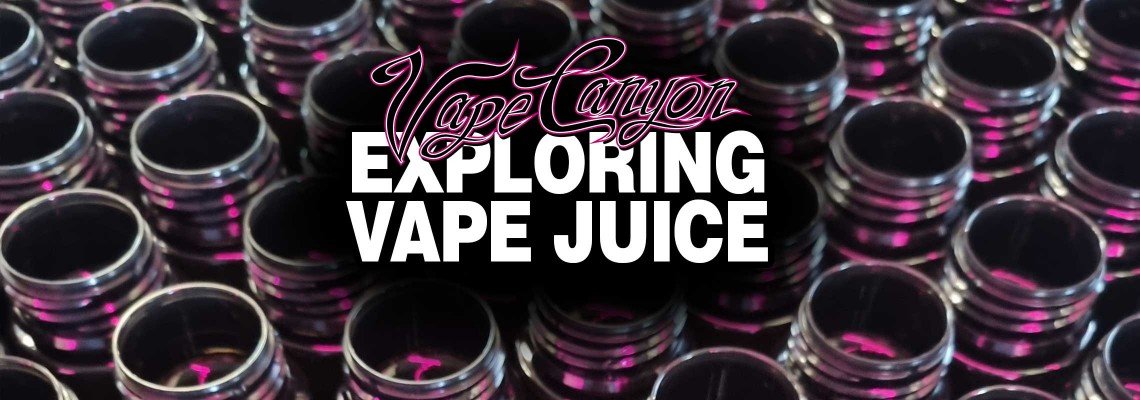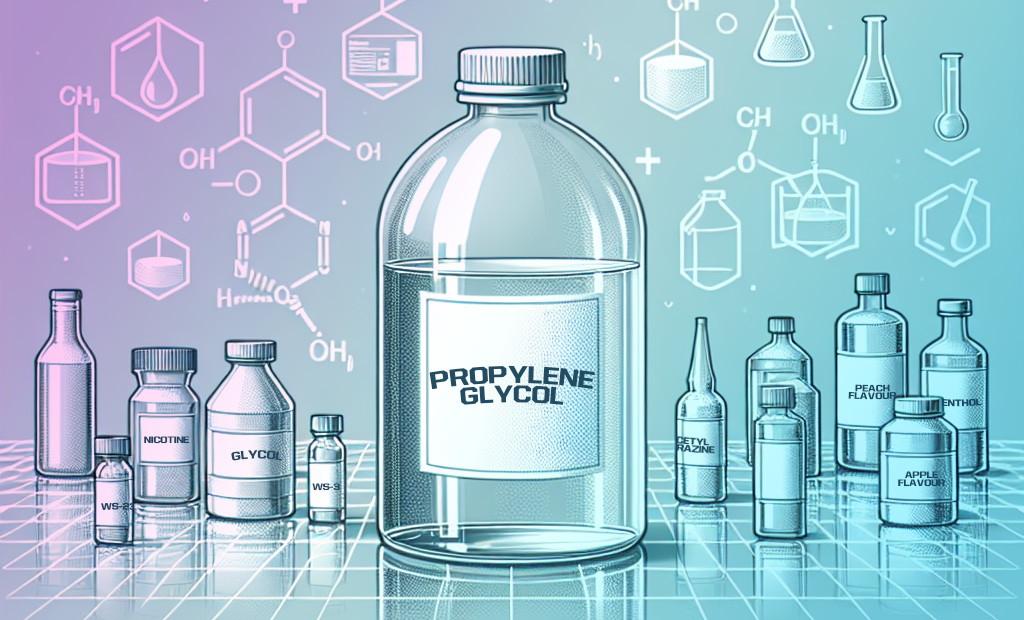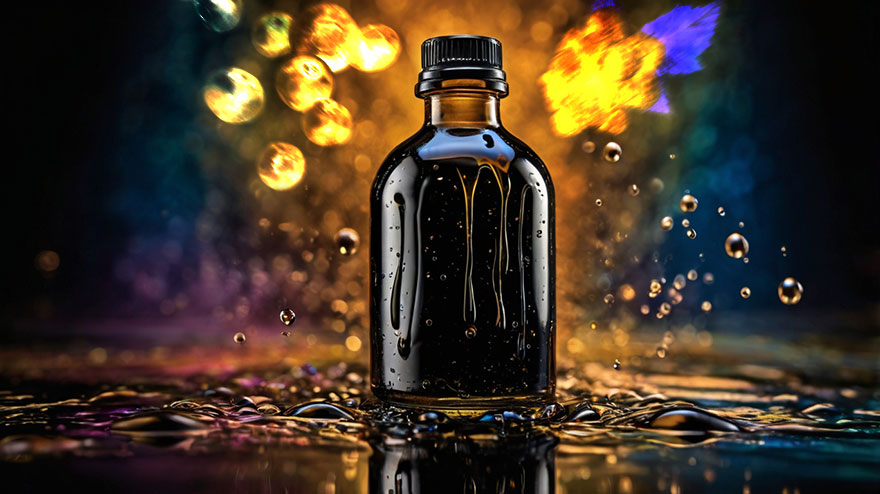What's inside your vape juice?

Updated 17/05/24
Vaping has taken the world by storm as an alternative to smoking and it's a trend that's here to stay.
But have you ever wondered what's inside your e-juice? Or what your inhaling when you take a puff from your disposable e-cigarette or refillable pod?
Today we'll dive deep into the ingredients that make up vape juice. We'll break down the components that make up the e-liquid you use in your vaporizer.
From Propylene Glycol and Vegetable Glycerin to Nicotine and Flavourings, we'll demystify these ingredients. We'll also discuss the safety and quality standards of e-liquids.
Whether you're already vaping, new to vaping, or simply curious about what's inside your vape juice, this guide is for you.
IMAGE VAPING
Unveiling the Vape Juice Mystery
Vape juice, also known as e-liquid or e-juice, is the fluid that fuels your vaporizer. It's what gets heated up and turned into vapor.
But what exactly is in this liquid?
The primary ingredients in vape juice are Propylene Glycol (PG), Vegetable Glycerin (VG), Nicotine, and Flavourings. Some vape juices may also contain additives like sweeteners or enhancers.
Here's a quick rundown of these ingredients:
- Propylene Glycol (PG)
- Vegetable Glycerin (VG)
- Nicotine
- Flavourings
- Additives
Let's dive deeper into each of these components.
The Base: PG and VG Explained
The base of any vape juice is a mix of propylene glycol (PG) and vegetable glycerin (VG). These two ingredients make up the majority of the e-liquid.
But what are PG and VG? And what role do they play in your vaping experience?
IMAGIMAG
Propylene Glycol (PG) - The Flavour Carrier
Propylene Glycol, or PG, is a colourless, odourless liquid. It's used in a variety of products, from food to medicine.
In vape juice, PG serves as a flavour carrier. It helps to deliver the flavour of the e-liquid when you vape. With disposables, salts and pods, PG makes the vape juice thinner so it wicks faster preventing coil burnout.
PG has somewhat of a strong throat hit that can be perceived as harshness, which is why most sub-ohm e-juices only use 20% to 30%. With lower powered devices such as disposables, salts and pods less vapour is produced so this isn't an issue.

Vegetable Glycerin (VG) - The Cloud Maker
Vegetable glycerin, or VG, is a thicker, sweeter liquid. It's derived from plant oils and is also used in a wide range of products.
In vape juice, VG is responsible for vapour production. The higher the VG content, the more clouds your e-liquid will produce.
VG lacks the harshness that PG has and provides a smoother hit, making high VG e-juice popular among cloud chasers.
Nicotine: Optional but Crucial for Many
Nicotine is another key ingredient in vape juice. However, it's optional. You can find e-liquids with varying nicotine strengths, including zero-nicotine options.
Nicotine in vape juice is what satisfies the cravings of former smokers. It's also what can make vaping addictive.
IMAGE
Understanding Nicotine Strengths in Vape Juice
Nicotine strength in vape juice is measured in milligrams per milliliter (mg/ml). You'll find e-liquids ranging from 0mg (no nicotine) to 36mg (very high nicotine) or even higher.
Here's a general guide to understanding nicotine strengths:
For Sub-ohming:
- 0mg: Zero nicotine
- 1.5-3mg: Low nicotine
- 4-6mg: Medium nicotine
- 6-12mg: High nicotine
For Disposables & Refillable Pods:
- 0mg: Zero nicotine
- 3-6mg: Low nicotine
- 12-18mg: Medium nicotine
- 24-50mg: High nicotine
Choosing the right nicotine strength depends on your personal preference and smoking habits. If you're new to vaping we recommend starting with 6mg for Sub-Ohming and 20mg - 30mg for refillable pods and disposables.
Understanding Nicotine Types in Vape Juice
Freebase nicotine is the purest form of nicotine found in tobacco leaves. It is commonly used in traditional e-liquids. Freebase nicotine provides a more noticeable throat hit compared to salt nicotine and people typically feel satisfied for longer.
On the other hand, salt nicotine is a modified form of nicotine that is smoother to inhale and allows for higher strengths to be consumed without the harsh throat hit. Salt nicotine is often used in pod systems and provides a quicker nicotine hit.
The Flavour Factor: Endless Possibilities
Flavourings are what make vaping enjoyable and diverse. They add taste to the vape juice, making each puff a flavourful experience.
From traditional tobacco to exotic fruits and desserts, the possibilities are endless.
 How Flavours Define Your Vaping Experience
How Flavours Define Your Vaping Experience
There's nothing like finding the perfect e-juice that you can just vape all day long. How much enjoyment you get out vaping typically all comes down to a combination of different flavour notes. Some vapers prefer the classic leathery taste of tobacco, while others enjoy exploring fruity or complex blends.
The flavourings inside your vape juice are typically food grade and can be found in all sorts of edible goods. From candy through to beverages and desserts. They are created by flavour manufacturers, biotechnology companies and sometimes even e-liquid companies themselves.
These companies use a combination of natural and artificial ingredients to develop unique and appealing flavours. Food chemists mix various ingredients to create a specific flavour. Then e-liquid companies combine these flavours together to create delicious eliquid.
Additives and More
Apart from the main ingredients, some vape juices may contain additional components. These can include raw flavour chemicals, sweeteners, coolants and other additives.
These ingredients are used to enhance the flavour, sweetness, or increase or minimise the throat hit of the e-liquid.
Sweeteners like sucralose, ethyl maltol and erythritol are often added to vape juice to enhance its flavour. While Coolants like menthol, koolada and WS-23 add an icy touch.
Safety and Regulations: What You Should Know
When it comes to vape juice, safety and quality are paramount. It's important to know what you're inhaling and to ensure that your e-liquid meets regulatory standards.
In New Zealand, the Ministry of Health through the VRA has regulatory authority over all vaping products. This means that e-liquid manufacturers in the country must adhere to certain guidelines and standards.
However, regulations can vary by country. Some places may not have any restrictions on ingredients that are considered potentially harmful, or on the quality of the raw materials themselves.
Here are some key points to remember:
- Always check for a batch number and expiration date on your vape juice. If it's old toss it.
- Be cautious of counterfeit vape juices that may not adhere to safety standards.
- Keep vape juice out of reach of children and pets due to the risk of nicotine poisoning.
Identifying Quality Vape Juice
So how can you identify a quality vape juice? There are a few things to look out for.
First, check the label. A clear ingredients list and proper labeling are signs of a reputable vape juice.
Second, consider the brand and where you're buying from. It's advisable to purchase vape juice from reputable brands and vape shops.
Lastly, be aware of the signs of a bad vape juice, such as off flavors, separation, or unusual cloudiness. Always prioritize quality and safety when choosing your e-liquid.
